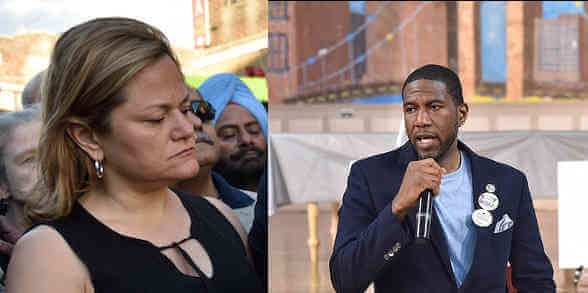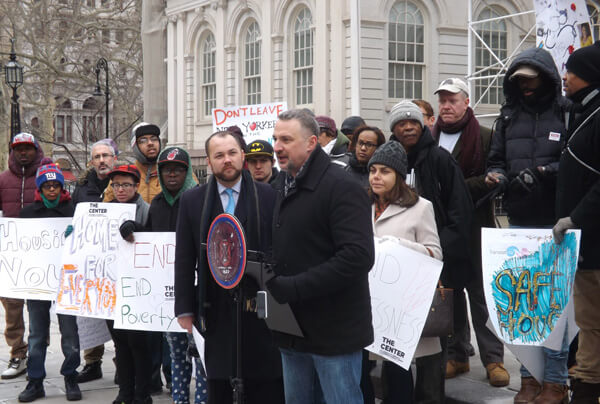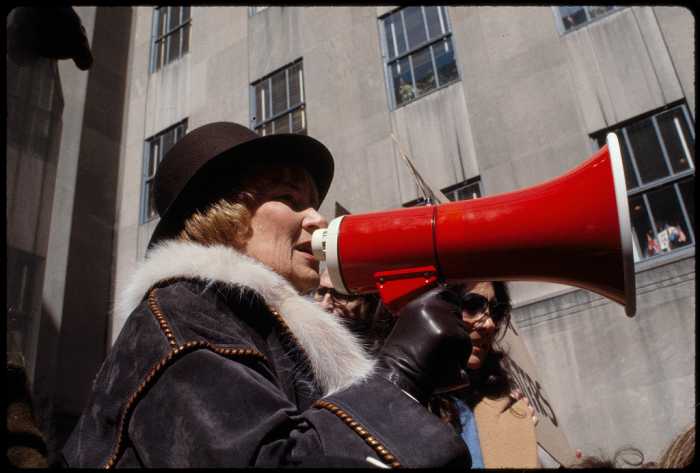Dr. Demetre Daskalakis, New York City’s deputy commissioner for disease control, at last December’s dedication of the NYC AIDS Memorial in the West Village. | DONNA ACETO
As he was discussing New York’s Plan to End AIDS, an ambitious undertaking that aims to reduce new HIV infections in the state from the estimated 2,481 in 2014 to 750 annually by 2020, the relentlessly upbeat Dr. Demetre Daskalakis, New York City’s deputy commissioner for disease control, was blunt when asked about the plan’s prospects if new HIV infections are not reduced among black and Latino gay and bisexual men.
“You lost the game,” Daskalakis said in an interview.
Viewed as a math problem, it is clear what the plan must do. The great majority of new HIV infections in New York occur in New York City, so it is here that the reductions must happen. There were an estimated 1,696 new HIV infections in 2015 in the city and 1,288 of those occurred in men who have sex with men (MSM).
City officials, advocates note progress, but agree more needed in communities of color
Estimated new infections are different from documented new diagnoses since diagnoses in a given year capture infections from that year as well as earlier ones. If new 2015 HIV diagnoses, however, are viewed as a surrogate for the demographic pattern of new HIV infections, then most of the new infections are occurring among African-American and Latino gay and bisexual men. In 2015, there were 2,493 new HIV diagnoses in the city with 2,011 among men, 441 among women, and 42 among transgender New Yorkers.
Among men in 2015, 1,450 of the new diagnoses were among MSM, 412 had no known risk factor, and the remaining 149 were among heterosexuals, drug injectors, gay and bisexual men who inject drugs, and just two were mother-to-child transmission cases.
In 2015, 745 of the new diagnoses were among black men, 759 were among Latino men, and 386 were among white men, with the remaining 121 occurring among Pacific Islander, Native American, and multiracial men.
Recognizing its central role in the plan, the city has set a goal of getting to 600 new HIV infections by 2020. And the city recognizes that without substantial reductions in new HIV infections among Latino and black MSM, the Plan to End AIDS fails.
The plan relies on providing stable housing, nutrition, and other services for people who are HIV-positive and treating them with anti-HIV drugs so they remain healthy and cannot infect others. It offers anti-HIV drugs to HIV-negative people in two ways to prevent infection — post-exposure prophylaxis (PEP) for people who had a recent exposure to the virus and pre-exposure prophylaxis (PrEP) for ongoing HIV prevention. PrEP and PEP are highly effective when taken correctly.
City health department data suggest that awareness and uptake of PrEP has increased significantly from 2014 through 2016, though that data also suggests that much of the increase in PrEP use is attributable to white men taking the once-a-day pill.
“I think that the lesson from the data is that everyone who is working in the PrEP space has done a really good job, but not entirely with MSM who speak Spanish and maybe not entirely with black MSM,” Daskalakis said. “The sort of caveat is the uptake doesn’t 100 percent match the epidemic.”
Since December 2016, the city has seen roughly 800 “PrEP starts” at its health clinics, Daskalakis said, with most of those among men. Just over 59 percent of those men were black and Latino. Since October 2016, it has referred 4,500 New Yorkers to providers that can prescribe PrEP.
“Right now the main show that we are seeing is mainly MSM in those clinics,” Daskalakis said. “The next phase of what’s going to happen in New York City is we’re going to be going deeper.”
The city issued its annual HIV epidemiology report for 2016 this week, and in discussing that report in advance of its release Daskalakis said some evidence of the plan’s impact will be apparent in that report. He expects to see even more such evidence in the 2017 report, which will be issued in late 2018.
“2016 is the first year you will see the impact for the first time,” he said. “I think you’re going to start seeing the impact of [the plan] accelerating declines probably next year… I would expect that the majority of the impact will be seen next year.”
AIDS groups are praising the city. The de Blasio administration endorsed the Plan to End AIDS and has been willing to spend money on it. That stands in stark contrast to the Bloomberg and Giuliani administrations, which cut funding for AIDS and HIV prevention services.
“The city is doing much better, but we still have a way to go to put more priority toward young black and Latino MSM,” said Guillermo Chacon, president of the non-profit Latino Commission on AIDS. “When we talk about Latino MSM, we need more… If we don’t do that, we will not be able to reach our community goals by 2020.”
Gary English, who once headed People of Color in Crisis, a now-closed New York City AIDS group, and is now the executive director of Get It Get It, a new HIV prevention group serving black gay men that received a $166,000 city contract to develop PrEP messaging, also lauded the city.
“I think we have got to keep the PrEP conversation at the front in the black gay community,” English said. “If we don’t have special program initiatives, we’re not going to see the uptake. It has to be designed for black gay men.”




































